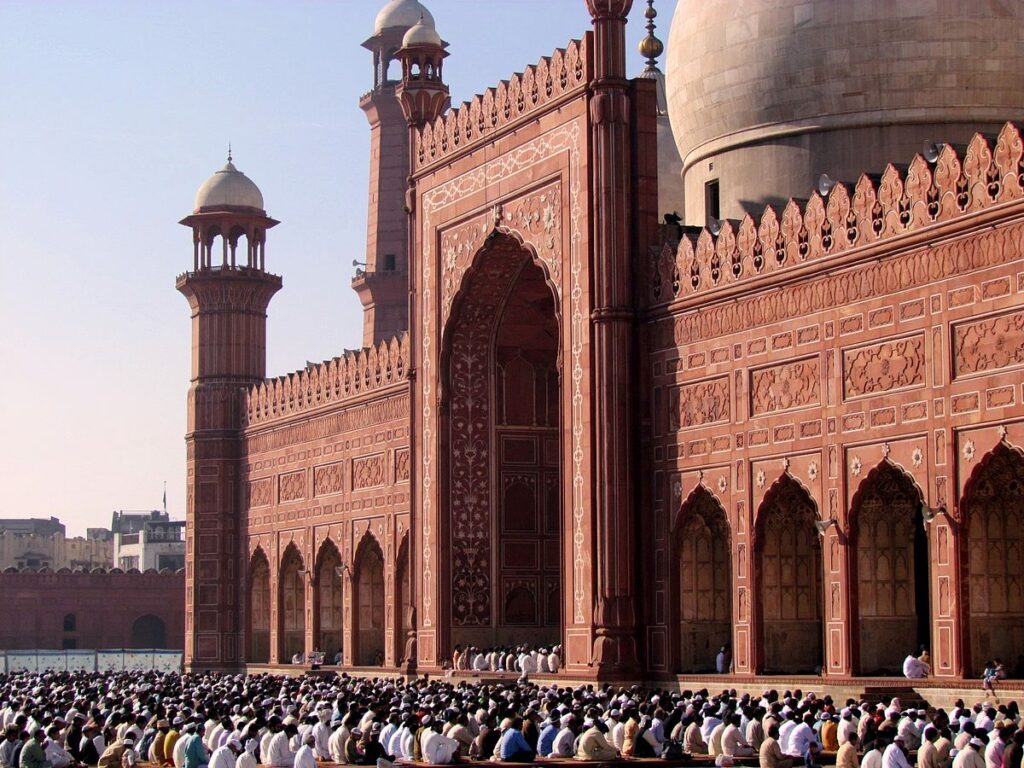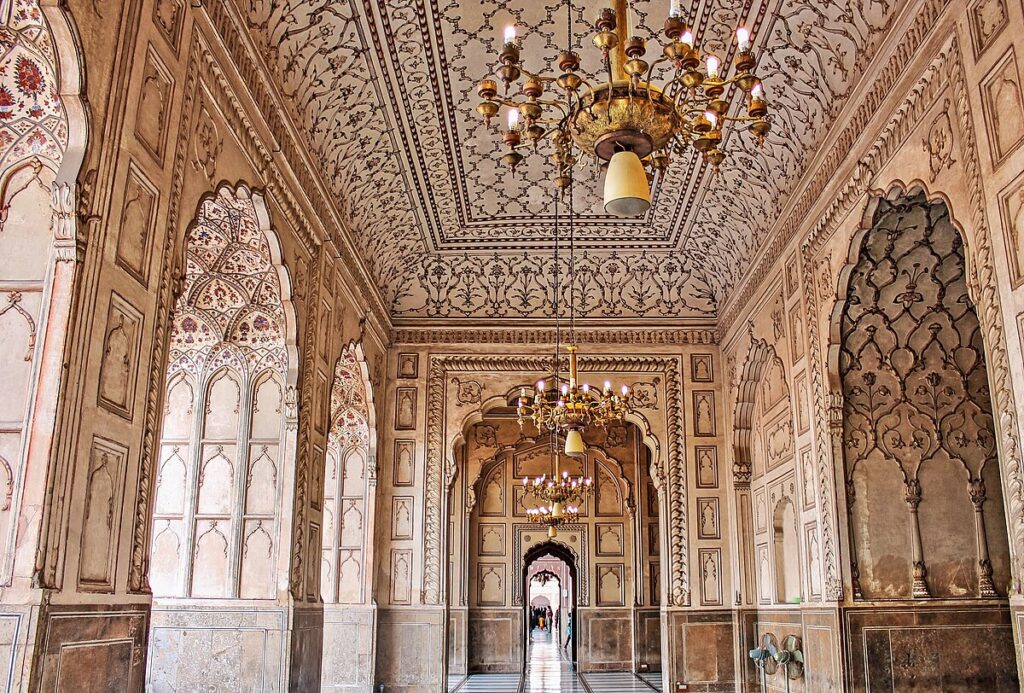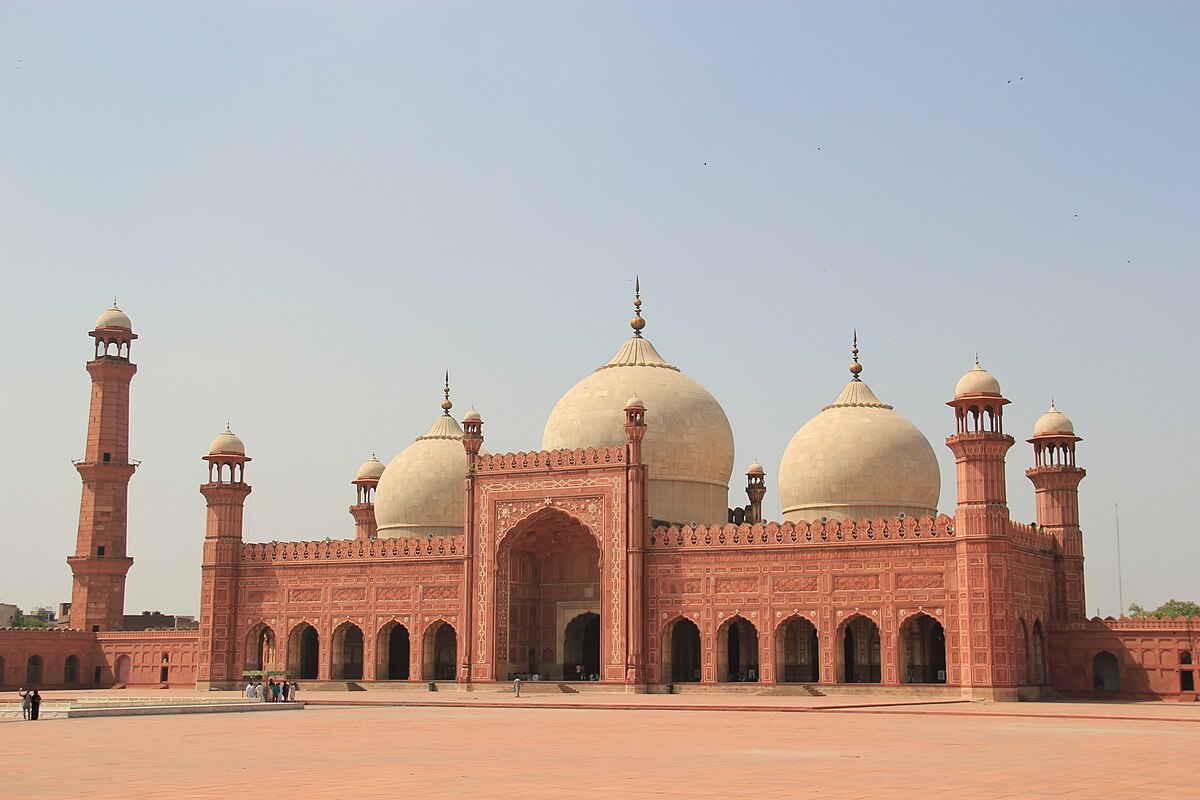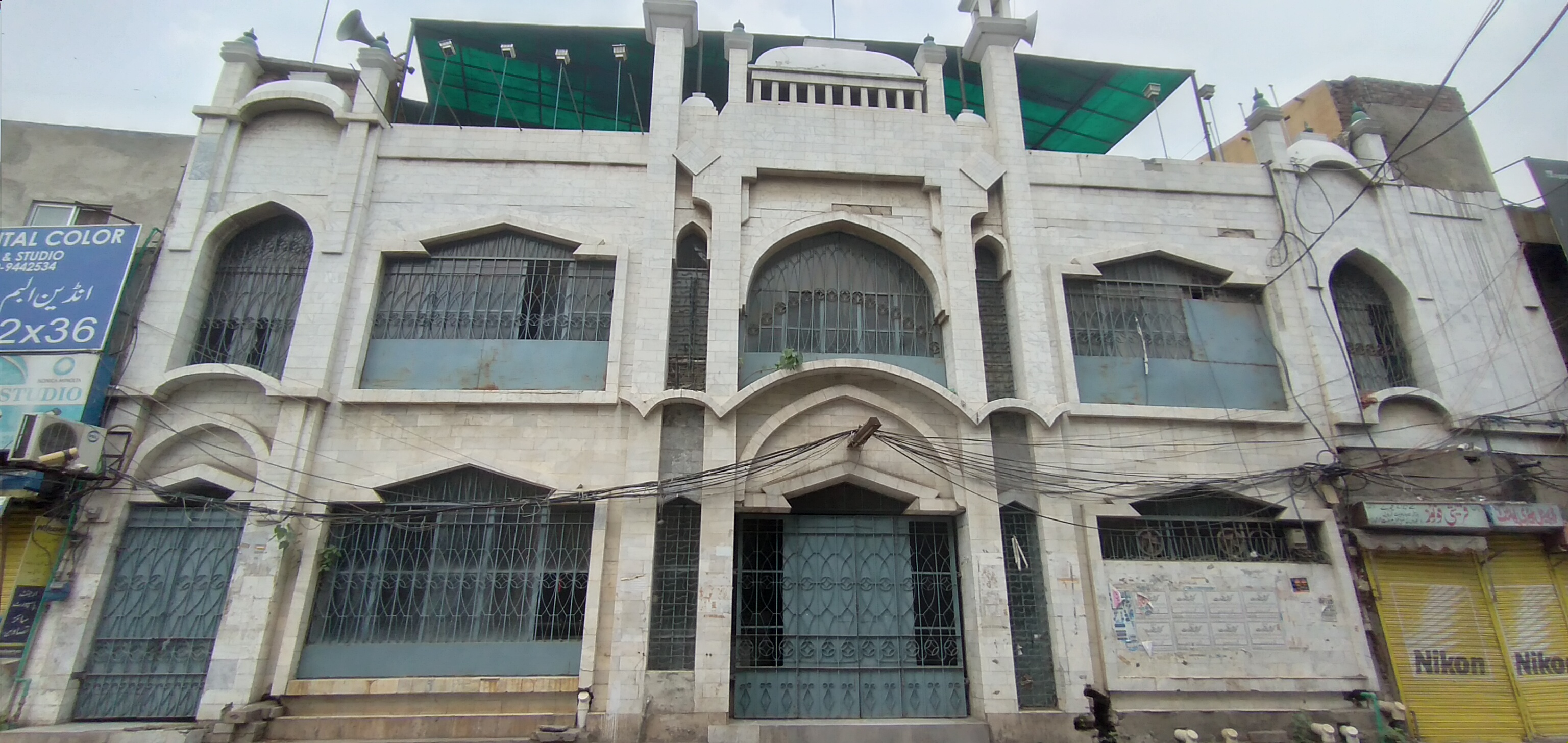The Badshahi Mosque lahore, is not only one of the greatest landmarks of Lahore but also one of the most admired examples of Mughal architecture in the world. Built in 1673 under the reign of Emperor Aurangzeb, this mosque stands as a grand symbol of faith, heritage, and power. For centuries, travelers, poets, and worshippers have been drawn to its majestic domes and towering minarets. If you are searching for information about Badshahi Mosque, its timings, or even curious about its role in cultural traditions such as nikkah ceremonies, this guide will provide you with everything you need to know while weaving in my own experience as an archaeologist and heritage guide.
Who built Badshahi Mosque?
The Badshahi Mosque was built by Mughal Emperor Aurangzeb Alamgir in 1673, during the height of the Mughal dynasty. He commissioned it as a symbol of Islamic devotion and imperial power. Standing just opposite the Lahore Fort, it was designed to reflect the strength of Mughal rule and its connection with divine authority.
When was it built?
Construction began in 1671 and was completed in just two years. It became the largest mosque of its time and remained the biggest in the world for centuries.
Why was it built?
Aurangzeb wanted a mosque that matched the magnificence of Lahore Fort and could accommodate thousands of worshippers at once. The design and scale were meant to impress, inspire, and strengthen the Mughal presence in Punjab.
Where is it located?
The mosque is located in the heart of Lahore’s walled city, right at the edge of the Shahi Qila (Lahore Fort) and overlooking the historic Hazuri Bagh.
How was it built?
The mosque was constructed primarily with red sandstone, decorated with marble inlay, and adorned with intricate frescoes. Its symmetrical layout, expansive courtyard, and monumental gateways show the Mughal mastery of combining faith with artistry.
Architecture of Badshahi Mosque

The Badshahi Mosque architect is often credited to Nawab Zain Yar Jang Bahadur, Aurangzeb’s chief architect. His vision gave Lahore one of its most iconic monuments. The mosque covers over 276,000 square feet, with a prayer hall that can accommodate more than 55,000 worshippers at once.
The mosque’s courtyard is the largest in Pakistan, and the prayer chamber is decorated with marble panels and frescoes. The four tall minarets, each standing at 176 feet, guard the mosque like sentinels of history. Its grandeur is often compared to Delhi’s Jama Masjid, but many believe the Lahore mosque surpasses it in both beauty and scale.
Important Historical Events
Throughout its existence, the mosque has witnessed major historical episodes. During the Sikh period in the 18th century, it was used as a garrison and its courtyards were damaged by military use. Under British colonial rule, it was turned into a military barracks before finally being restored as a place of worship in the 20th century.
Today, the mosque is not just a monument but a living heritage site that continues to host Friday prayers, Eid gatherings, and cultural ceremonies.
5 Interesting Facts about Badshahi Mosque
It remained the largest mosque in the world for over 300 years.
- The courtyard can hold more than 100,000 worshippers during Eid.
- Relics of the Prophet Muhammad (PBUH) are preserved in the mosque’s chambers.
- Its design is symmetrical with perfect Mughal precision, with minarets placed at equal distances.
- The mosque is aligned with the Ravi River, which once flowed right beside its walls.

Visiting Badshahi Mosque
If you are planning a trip to Lahore, knowing the Badshahi Mosque timings is essential. Generally, it is open from early morning until Isha prayers. Non-Muslim visitors are welcome to explore during non-prayer times, while Fridays and Eid days attract the largest crowds.
Photography lovers will be delighted to know that the site is one of the most photographed in Pakistan. Searching Badshahi Mosque pics online gives you a glimpse, but nothing compares to standing inside its vast courtyard as the sun sets behind its red sandstone domes.
Nikkah at Badshahi Mosque
The mosque is also a popular place for Islamic marriage ceremonies. Many couples dream of starting their married life at such a historic site. The Badshahi Mosque nikkah cost is managed by the mosque administration, and while the process is not overly expensive, it requires proper paperwork and prior booking. For families, it is not just a ceremony but a spiritual and cultural milestone.
Current Use of the Building
Today, Badshahi Mosque is both a sacred place and a cultural emblem of Lahore. It hosts daily prayers, religious festivals, educational gatherings, and thousands of visitors each week. Beyond its function as a mosque, it serves as a symbol of Lahore’s rich past and its vibrant present.
My Personal Experience
As an archaeologist and heritage guide, every visit to Badshahi Mosque feels like stepping into the pages of a living history book. The air carries echoes of the Mughal empire, the devotion of worshippers, and the resilience of a monument that has survived centuries of political change.
When I take visitors on my Heritage Tour of Lahore, this mosque is often the highlight. Standing in its courtyard, surrounded by Lahore Fort on one side and Hazuri Bagh on the other, one truly understands how architecture shapes memory and identity. It is more than just stone and marble, it is a reminder of how empires leave their mark on cities and souls.
If you enjoyed this, you may also like my writings on the Katas Raj Temples.

Frequently Asked Questions
Q1. Who built Badshahi Mosque?
The Badshahi Mosque was built by Mughal Emperor Aurangzeb Alamgir in 1673.
Q2. What is the history of Badshahi Mosque?
It was constructed as a grand imperial mosque in Lahore, serving as a symbol of Mughal devotion and power.
Q3. What are the Badshahi Mosque timings?
The mosque is open from early morning until Isha prayers. Visitors are advised to avoid prayer times if they are sightseeing.
Q4. What is the Badshahi Mosque nikkah cost?
The cost is managed by the mosque administration. It is modest but requires booking and official paperwork.
Q5. Can you share 5 interesting facts about Badshahi Mosque?
Yes, the mosque was once the largest in the world, holds relics of the Prophet Muhammad (PBUH), has a courtyard for over 100,000 worshippers, and is one of the most photographed landmarks of Pakistan.
Q6. Who was the Badshahi Mosque architect?
The mosque is credited to Nawab Zain Yar Jang Bahadur, chief architect under Aurangzeb.
Q7. Where can I find Badshahi Mosque pics?
Plenty of high-resolution images are available online, but visiting the site offers a truly unforgettable experience.
Call to Action
The Badshahi Mosque is more than a monument, it is a living masterpiece that continues to inspire faith, art, and history. If you wish to experience its beauty and hidden stories beyond the usual tourist lens, I invite you to book a customized tour with me. Explore Lahore and Pakistan’s heritage through my eyes, as an archaeologist and storyteller. Follow my journey and heritage work through Vlogumentary across all platforms, and together let us keep these timeless stories alive.




